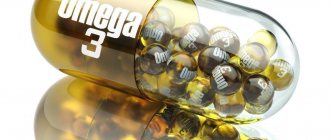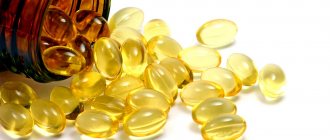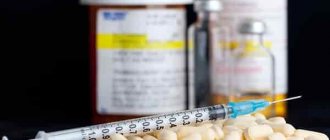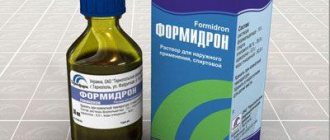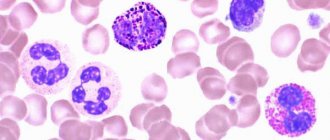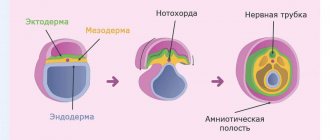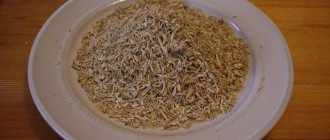dextrose (D-glucose), glucose, grape sugar - formula C6H12O6 is an organic compound, a monosaccharide (six-hydroxyaldehyde, hexose), one of the most common sources of energy in living organisms on the planet. It is found in the juice of many fruits and berries, including grapes, which is where the name of this type of sugar comes from. The glucose unit is part of polysaccharides (cellulose, starch, glycogen) and a number of disaccharides (maltose, lactose and sucrose), which, for example, are quickly broken down into glucose and fructose in the digestive tract.
Chemical composition
Glucose is found in large quantities in fruits and berries.
Glucose is a monosaccharide with a hexose. The composition includes starch, glycogen, cellulose, lactose, sucrose and maltose. Once in the stomach, grape sugar is broken down into fructose.
The crystallized substance is colorless, but with a pronounced sweet taste. Glucose can dissolve in water, especially in zinc chloride and sulfuric acid.
This makes it possible to create medical preparations based on grape sugar to compensate for its deficiency. Compared to fructose and sucrose, this monosaccharide is less sweet.
Properties of glucose
Physical properties
| column1 | column2 |
| Molar mass | 180.16 g/mol |
| Density | 1.54 g/cm3 |
| Melting point | 146℃ |
| Spontaneous combustion point | 500℃ |
| Optical refractive index | 1,51 |
| State of aggregation | Solid, crystalline, transparent substance |
| Solubility | Soluble in water, concentrated H3SO4, ZnCl2 solution, Schweitzer solution. |
| Smell, taste | There is no discernible smell, the taste is sweet. |
Chemical properties
Glucose is a reducing agent - it gives up electrons from the outer electronic level of atoms and reduces another substance. Glucose molecules uniting with each other produce polysaccharide products: glycogen, cellulose, starch. Glucose as a structural unit is found in more complex sugars - sucrose, lactose, maltose. Reverse cleavage of these disaccharides produces glucose and fructose.
- Glucose reacts with an ammonia solution of silver oxide to form a silver mirror:
CH2OH-(CHOH)4-CHO+Ag2O → CH2OH-(CHOH)4-COOH + 2Ag
- When reacting with copper hydroxide it gives a red precipitate Cu2O
CH2OH-(CHOH)4-CHO + 2Cu(OH)2 → CH2OH-(CHOH)4-СОOH + Cu2O↓ + 2H2O
- Reduced with hydrogen to form hexahydric alcohol (sorbitol)
CH2OH-(CHOH)4-CHO + H2 → CH2OH-(CHOH)4-CH2OH
- Fermentation processes
- lactic acid fermentation
C6H12O6 → 2CH3 –CHOH–COOH;
- alcoholic fermentation
С6H12O6 → 2СH3 –CH2OH + 2CO2↑.
Significance in the life of animals and humans
Why is glucose so important in the body and why is it needed? In nature, this chemical is involved in the process of photosynthesis.
This is because glucose is able to bind and transport energy to cells. In the body of living beings, glucose, due to the energy produced, plays an important role in metabolic processes. Main benefits of glucose:
- Grape sugar is an energy fuel that allows cells to function smoothly.
- 70% of glucose enters the human body through complex carbohydrates, which, when entering the gastrointestinal tract, are broken down into fructose, galactose and dextrose. Otherwise, the body produces this chemical, using its own stored reserves.
- Glucose penetrates into the cell, saturates it with energy, due to which intracellular reactions develop. Metabolic oxidation and biochemical reactions occur.
Many cells in the body are capable of producing grape sugar on their own, but not the brain. An important organ cannot synthesize glucose, so it receives nutrition directly through the blood.
The level of glucose in the blood, for normal functioning of the brain, should not be lower than 3.0 mmol/l.
Examination algorithm
Svetlana Filippovna, how can diabetes be diagnosed?
Laboratory research methods and their correct interpretation play an important role in the diagnosis of diabetes. There is a certain algorithm for examining diabetes mellitus. Healthy people with normal body weight and no heredity check the level of glucose in the blood and urine (on an empty stomach). When normal values are obtained, an additional test for glycated hemoglobin (GG) is required. About 5-8% of the hemoglobin found in red blood cells attaches a glucose molecule to itself, which is why such molecules are called glycated. The degree of glycation depends on the concentration of glucose, which remains in erythrocytes throughout their 120-day life (the norm is 4.5–6.5% of the total amount of hemoglobin). Therefore, at any given time, the percentage of glycated hemoglobin reflects the average level of glucose concentration in the patient's blood over the 2-3 months preceding the study. When monitoring diabetes therapy, it is recommended to maintain the level of glycated hemoglobin less than 7% and review therapy at a GG level of 8%. If a high level of glycated hemoglobin is obtained (screening in a healthy patient), it is recommended to determine the blood glucose level 2 hours after a glucose load (75 g). This test is especially necessary if your blood glucose levels, although higher than normal, are not high enough to show signs of diabetes. The test is carried out in the morning, after an overnight fast (at least 12 hours). Determine the initial glucose level and 2 hours after taking 75 g of glucose dissolved in 300 ml of water. Normally (immediately after a glucose load), its concentration in the blood increases, which stimulates insulin secretion. This in turn reduces the concentration of glucose in the blood; after 2 hours, its level practically returns to the original level in a healthy person and does not return to normal, exceeding the initial values twice as much in patients with diabetes. Once again, I would like to note that it is insulin (the pancreatic hormone) that is involved in maintaining a constant level of glucose in the blood (the degree of its secretion is determined by the level of glucose). Insulin is essential for differentiating different forms of diabetes. Thus, type 1 diabetes is characterized by low insulin levels, type 2 diabetes is characterized by normal or elevated levels. Insulin testing is used to confirm the diagnosis in people with borderline impaired glucose tolerance. Normal insulin levels are 15-180 pmol/L (2-25 µC/L).
More details about the service
Who benefits from glucose?
Regular consumption of glucose affects the baby's weight in the womb.
The monosaccharide does not always enter the body with food, especially if the diet is poor and not combined. Indications for use of glucose:
- During pregnancy and suspected low fetal weight. Regular consumption of glucose affects the baby's weight in the womb.
- When the body is intoxicated. For example, chemicals such as arsenic, acids, phosgene, carbon monoxide. Glucose is also prescribed for drug overdose and poisoning.
- For collapse and hypertensive crisis.
- After poisoning as a restorative agent. Especially with dehydration due to diarrhea, vomiting or in the postoperative period.
- For hypoglycemia, or low blood sugar. Suitable for diabetes, check regularly using glucometers and analyzers.
- Liver diseases, intestinal pathologies due to infections, and hemorrhagic diathesis.
- Used as a restorative remedy after long-term infectious diseases.
Obtaining glucose
Artificial acquisition
The most studied method of producing glucose chemically is the process of decomposition of di- and polysaccharides. The reagents used are starch or cellulose and water, which decompose to form glucose and by-products.
- Starch hydrolysis
(C6H10O5)n + nH2O t,H+→ nC6H12O6
- From formaldehyde
6HCOHCa(OH)2→C6H12O6
- hydrolysis of disaccharides
C12H22O11 + H2Ot,H+→ 2C6H12O6
Natural Receipt
Glucogenesis is a separate term for the process of formation of glucose from molecules of keto acids, for example, pyruvic acid. Gluconeogenesis is the formation of glucose from lactate, pyruvate and other non-carbohydrate compounds.
Release form
There are three forms of glucose release:
- Intravenous solution. Prescribed to increase osmotic blood pressure, as a diuretic, to dilate blood vessels, to relieve tissue swelling and remove excess fluid, to restore the metabolic process in the liver, and also as nutrition for the myocardium and heart valves. It is produced in the form of dried grape sugar, which dissolves in concentrates with different percentages.
- Pills. Prescribed to improve general condition, physical and intellectual activity. Acts as a sedative and vasodilator. One tablet contains at least 0.5 grams of dry glucose.
- Solutions for infusions (droppers, systems). Prescribed to restore water-electrolyte and acid-base balance. Also used in dry form with a concentrated solution.
How to check your blood sugar levels, watch the video:
https://www.youtube.com/watch?v=Eqrg24QtnA0&t=1789s
Application
Glucose is the main nutrient of autotrophic and heterotrophic organisms, which absorb it and convert it into organic substances necessary for life. Cellular respiration of organisms begins with the process of glycolysis - the breakdown of glucose into pyruvic acid. Salts are formed from the products of glycolysis - pyruvates, and further reactions lead to the formation of adenosine triphosphate, or the energy molecules ATP. As a storage compound, organisms store reserve energy-producing substances glycogen (in heterotrophs) and starch (in autotrophs).
Glucose is a low molecular weight sweetener in the food industry and an additional substance in pharmaceuticals. The sweetener sorbitol (E420) is obtained by hydrogenating glucose until a hydroxo group is formed in place of the aldehyde.
In medicine, glucose solution is used for intravenous injection to counteract food, alcohol and other intoxications. In the field of endocrinology, it is used to diagnose diabetes as a test indicator.
Contraindications and side effects
Glucose is not prescribed to persons suffering from diabetes mellitus and pathologies that increase blood sugar levels. If prescribed incorrectly or self-medicated, acute heart failure, loss of appetite and disruption of the insular apparatus may occur.
Also, glucose should not be administered intramuscularly, as this can cause necrosis of subcutaneous fat. With rapid administration of a liquid solution, hyperglucosuria, hypervolemia, osmotic diuresis and hyperglycemia may occur.
Glucose is a simple sugar, the main hydrocarbon in the blood and the main source of energy for all cells.
Synonyms Russian
Blood sugar test, blood glucose test, fasting blood glucose test.
English synonyms
Blood sugar, fasting blood sugar, FBS, fasting blood glucose, FBG, fasting plasma glucose, blood glucose, urine glucose.
Research method
Enzymatic UV method (hexokinase).
Units
Mmol/L (millimoles per liter), mg/dL (mmol/L x 18.02 = mg/dL).
What biomaterial can be used for research??
Venous, capillary blood.
How to properly prepare for research?
- Do not eat for 12 hours before the test.
- Avoid physical and emotional stress 30 minutes before the test.
- Do not smoke for 30 minutes before the test.
General information about the study
Glucose is a simple sugar that serves as the body's main source of energy. The carbohydrates consumed by a person are broken down into glucose and other simple sugars, which are absorbed by the small intestine and enter the blood.
Most cells in the body require glucose to produce energy. The brain and nerve cells need it not only as a source of energy, but also as a regulator of their activity, since they can function only if the glucose level in the blood reaches a certain level.
The body can use glucose thanks to insulin, a hormone produced by the pancreas. It regulates the movement of glucose from the blood into the body's cells, causing them to accumulate excess energy in the form of a short-term reserve - glycogen or in the form of triglycerides, deposited in fat cells. A person cannot live without glucose and without insulin, the content of which in the blood must be balanced.
Normally, the glucose level in the blood plasma increases slightly after a meal, while secreted insulin lowers its concentration. Insulin levels depend on the volume and composition of food taken. If the concentration of glucose in the blood drops too low, which can happen after several hours of fasting or after intense physical activity, glucagon (another pancreatic hormone) is released, which causes liver cells to transform glycogen back into glucose, thereby increasing its level in the blood .
Maintaining normal blood glucose levels is extremely important. When the glucose-insulin feedback mechanism works properly, blood glucose levels remain fairly stable. If this balance is disturbed and the blood sugar level increases, then the body seeks to restore it, firstly, by producing more insulin, and secondly, by excreting glucose in the urine.
Extreme forms of hyper- and hypoglycemia (excess and lack of glucose) can threaten the patient’s life, causing organ dysfunction, brain damage and coma. Chronically elevated blood glucose levels can cause damage to the kidneys, eyes, heart, blood vessels and nervous system. Chronic hypoglycemia is dangerous for the brain and nervous system.
Sometimes women experience hyperglycemia (gestational diabetes) during pregnancy. If left untreated, it can cause the mother to give birth to a large baby with low blood glucose levels. Interestingly, a woman who suffers from hyperglycemia during pregnancy will not necessarily have diabetes after pregnancy.
What is the research used for?
Glucose levels are important in the diagnosis of hyper- and hypoglycemia and, accordingly, in the diagnosis of diabetes mellitus, as well as for its subsequent monitoring. Sugar testing can be done on an empty stomach (after 8-10 hours of fasting), spontaneously (any time), after a meal, and can also be part of an oral glucose tolerance test (OGT).
If diabetes is diagnosed, it is recommended to perform a fasting blood glucose test or a glucose tolerance test. Moreover, for final confirmation of the diagnosis, tests should be carried out twice at different times.
Most pregnant women are tested for gestational diabetes (a temporary type of hyperglycemia) between 24 and 28 weeks of pregnancy.
Diabetics should closely monitor their blood glucose levels to adjust their tablet intake and insulin injections. It is usually necessary to determine how far the glucose concentration deviates from the norm several times a day.
Measuring glucose levels at home is usually carried out using a special device - a glucometer, into which a test strip is placed with a previously applied drop of blood from the patient’s finger.
When is this test prescribed?
- During preventive examination of patients without suspicion of diabetes, since diabetes is a disease that begins with minor symptoms. It is especially important to monitor blood glucose levels in patients with a genetic predisposition to diabetes, those with increased body weight, and those over 45 years of age.
- When diagnosing diabetes in patients with symptoms of hyper- or hypoglycemia. Symptoms of hyperglycemia or high sugar: increased thirst, increased urination, fatigue, blurred vision, increased susceptibility to infections. Symptoms of hypoglycemia or low sugar: sweating, increased appetite, anxiety, clouded consciousness, blurred vision.
- If you lose consciousness or become very weak, to see if they are caused by low blood sugar.
- If the patient has a prediabetic state (in which plasma glucose levels are higher than normal, but lower than in diabetic patients), the analysis is carried out at regular intervals.
- For people diagnosed with diabetes, a blood glucose test is prescribed in conjunction with a glycated hemoglobin (A1c) test to track changes in blood glucose levels over a long period of time.
- In some cases, a plasma glucose test may be performed in conjunction with an insulin and C-peptide test to monitor insulin production.
- Pregnant women are usually tested for gestational diabetes at the end of their pregnancy. If a woman has been diagnosed with gestational diabetes before, she is tested for glucose throughout pregnancy, as well as after childbirth.
What do the results mean?
Reference values (Blood glucose norm)
| Age | Reference values |
| less than 14 years old | 3.3 - 5.6 mmol/l |
| children over 14 years old, men, non-pregnant women | 4.1 - 6.1 mmol/l |
| pregnant women | 4.1 - 5.1 mmol/l |
Other causes of elevated glucose levels:
- acromegaly,
- severe stress (reaction to trauma, heart attack, stroke),
- chronic renal failure,
- hypercortisolism syndrome (Itsenko-Cushing),
- taking medications such as corticosteroids, tricyclic antidepressants, diuretics, epinephrines, estrogens, lithium, diphenin (Dilantin), salicylates,
- excessive consumption of high carbohydrate foods,
- hyperthyroidism,
- pancreas cancer,
- pancreatitis.
Causes of low blood glucose levels:
- adrenal insufficiency,
- alcohol abuse,
- taking medications such as acetaminophen and anabolic steroids,
- liver diseases,
- hypopituitarism,
- hypothyroidism,
- insulin overdose,
- insulinomas,
- starvation.
The use of glucose in sports.
Isotonic drink. This substance is able to quickly supply energy to cells, and therefore is used to increase athletic endurance. Glucose is an effective tool for increasing the performance of athletes. It contains half as many calories as fats, but oxidizes much faster. Therefore, “fast carbohydrate” will help restore strength after exhausting loads in training or competitions. The use of glucose in sports is possible in the form of tablets, injection solutions or infusions. It can also be consumed by diluting it in water to prepare an isotonic drink.
For bodybuilders, glucose is extremely important, as are other carbohydrates. Its lack in food worsens metabolism and leads to loss of strength. In this case, the trainee not only loses activity, but also sharply reduces the possibility of gaining weight. It would seem that you consume a lot of glucose and exercise more, but in reality everything happens differently. Why is that? Firstly, elephant doses of “fast” carbohydrates increase cholesterol levels. Secondly, high blood sugar threatens diabetes. Also, excess glucose in food increases body fat, which a bodybuilder struggles with. Therefore, nutrition should be balanced and the diet varied. Professionals recommend glucose as a tactical remedy to quickly restore the amount of glycogen in the body.
It is better not to consume it right before training, otherwise the blood glucose level will drop sharply due to an increase in insulin levels. The best option is to take glucose immediately after training, during the so-called “carbohydrate window”. This is the period when muscle tissue is most sensitive to insulin. You can prepare an isotonic glucose drink for workouts lasting more than an hour. It is done very simply: dilute 14 glucose tablets of 0.5 grams in a liter of clean boiled water. To get the effect, you need to drink a glass of drink every 15-20 minutes. Let us add that glucose is part of the Leveton Forte vitamin complex, which helps the athlete cope with stress.
Links[edit]
- ^ab The Natural Way to Stay Sweet, NASA, retrieved September 2, 2009.
- Sasajima, K.; Sinsky, A. (1979). "Oxidation of l-glucose by pseudomonas". Biochimica et Biophysica Acta (BBA) - Enzymology
.
571
(1):120–126. DOI: 10.1016/0005-2744 (79) 90232-8. PMID 40609. - Malaisse, W. J. (1998), "The mystery of the insulinotropic action of L-glucose pentaacetate", Int. J. Mol. Med.
,
2
(4): 383–88, doi: 10.3892/ijmm.2.4.383, PMID 9857221, archived from the original on July 16, 2011. - Raymer, Jeffrey S.; Hartman, Donald E.; Rowe, William A.; Werkman, Robert F.; Koch, Kenneth L. (2003), "Open trial of L-glucose as a colon cleanser prior to colonoscopy," Gastrointest. Endosc.
,
58
(1): 30-35, DOI: 10.1067/mge.2003.293, PMID 12838217
